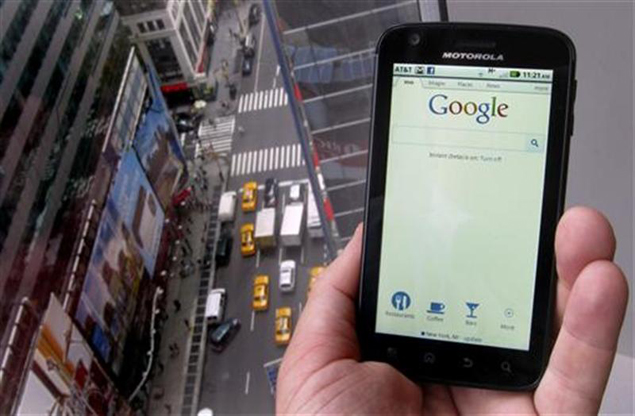- Home
- Mobiles
- Mobiles News
- EU backs Apple in Google Motorola patent fight
EU backs Apple in Google-Motorola patent fight

A statement said that the European Union had reached a "preliminary view" on a competition investigation opened in April 2012.
It had decided that Motorola Mobility's action "amounts to an abuse of a dominant position prohibited by EU anti-trust rules."
The Commission spelt out that "while recourse to injunctions is a possible remedy for patent infringements, such conduct may be abusive where standard-essential patents (SEPs) are concerned and the potential licensee is willing to enter into a licence on Fair, Reasonable and Non-Discriminatory (so-called "FRAND") terms."
EU Competition Commissioner Joaquin Almunia said "The protection of intellectual property is a cornerstone of innovation and growth. But so is competition.
"I think that companies should spend their time innovating and competing on the merits of the products they offer not misusing their intellectual property rights to hold up competitors to the detriment of innovation and consumer choice."
Almunia's spokesman said no view had yet been reached on a related complaint by Microsoft, but spelt out when pressed on Google's involvement Motorola Mobility is a wholly-owned subsidiary that "most of the behaviour in question took place before the company was acquired by Google."
He said the row centred on "general packet radio services technology" concerned with "intermediate technologies between 2G and 3G standards," in other words older mobile phone functioning.
In April 2013, the US International Trade Commission tossed out a Motorola Mobility patent claim that threatened to block the importation of some Apple iPhone models into the United States.
Motorola had accused Apple of infringing on patented technology that makes touch screens ignore fingers when people are holding smartphones to their ears for calls.
Also in April 2013, Germany's patent court invalidated a patent held by Apple and contested by rivals Motorola and Samsung on its "slide to unlock" function for smartphones. It concluded that the horizontal swiping gesture was not a technical innovation in itself and therefore did not meet requirements of European patent law.
The aim of the function was to make it easier for users to unlock their smartphone and not solve a specific technical problem, the court said.
Catch the latest from the Consumer Electronics Show on Gadgets 360, at our CES 2026 hub.
Related Stories
- Samsung Galaxy Unpacked 2025
- ChatGPT
- Redmi Note 14 Pro+
- iPhone 16
- Apple Vision Pro
- Oneplus 12
- OnePlus Nord CE 3 Lite 5G
- iPhone 13
- Xiaomi 14 Pro
- Oppo Find N3
- Tecno Spark Go (2023)
- Realme V30
- Best Phones Under 25000
- Samsung Galaxy S24 Series
- Cryptocurrency
- iQoo 12
- Samsung Galaxy S24 Ultra
- Giottus
- Samsung Galaxy Z Flip 5
- Apple 'Scary Fast'
- Housefull 5
- GoPro Hero 12 Black Review
- Invincible Season 2
- JioGlass
- HD Ready TV
- Laptop Under 50000
- Smartwatch Under 10000
- Latest Mobile Phones
- Compare Phones
- OPPO Reno 15 Pro Max
- Honor Win RT
- Honor Win
- Xiaomi 17 Ultra Leica Edition
- Xiaomi 17 Ultra
- Huawei Nova 15
- Huawei Nova 15 Pro
- Huawei Nova 15 Ultra
- Asus ProArt P16
- MacBook Pro 14-inch (M5, 2025)
- OPPO Pad Air 5
- Huawei MatePad 11.5 (2026)
- Xiaomi Watch 5
- Huawei Watch 10th Anniversary Edition
- Acerpure Nitro Z Series 100-inch QLED TV
- Samsung 43 Inch LED Ultra HD (4K) Smart TV (UA43UE81AFULXL)
- Asus ROG Ally
- Nintendo Switch Lite
- Haier 1.6 Ton 5 Star Inverter Split AC (HSU19G-MZAID5BN-INV)
- Haier 1.6 Ton 5 Star Inverter Split AC (HSU19G-MZAIM5BN-INV)

















